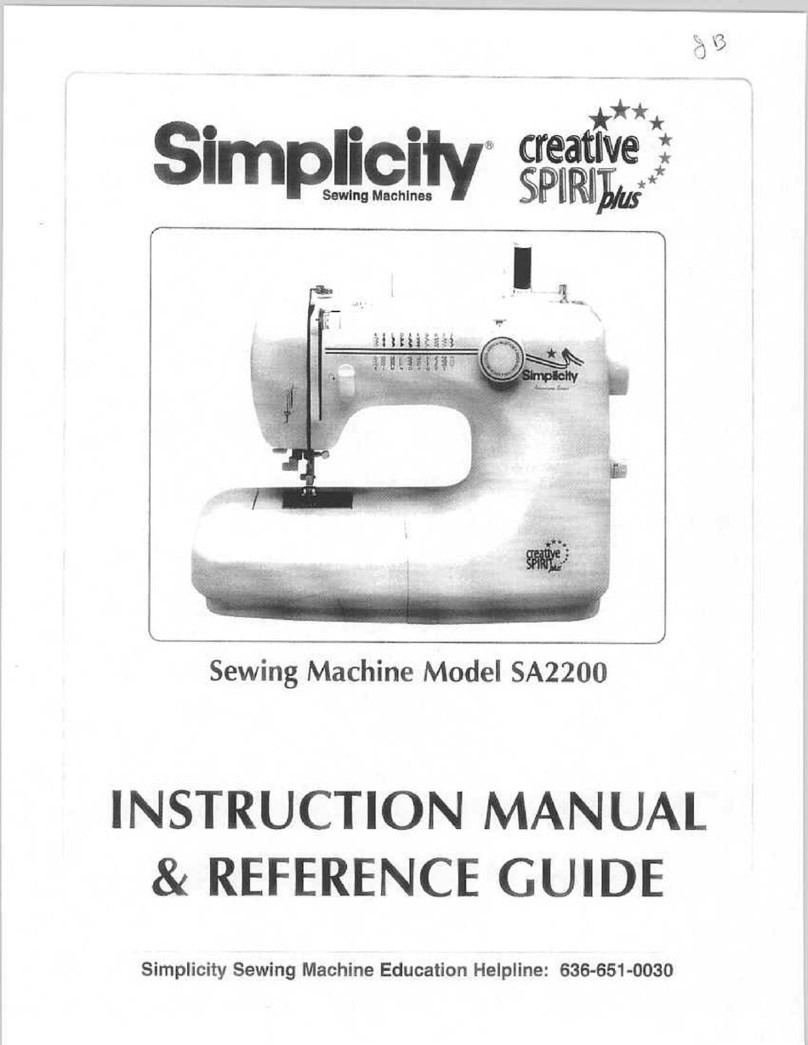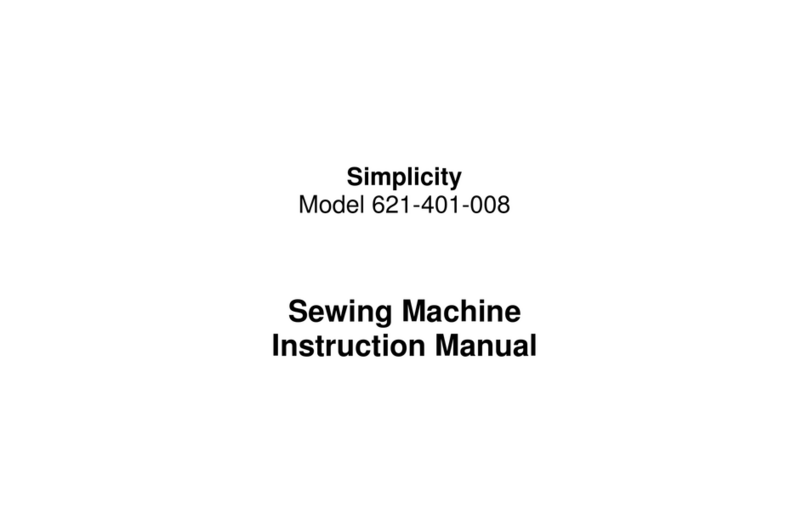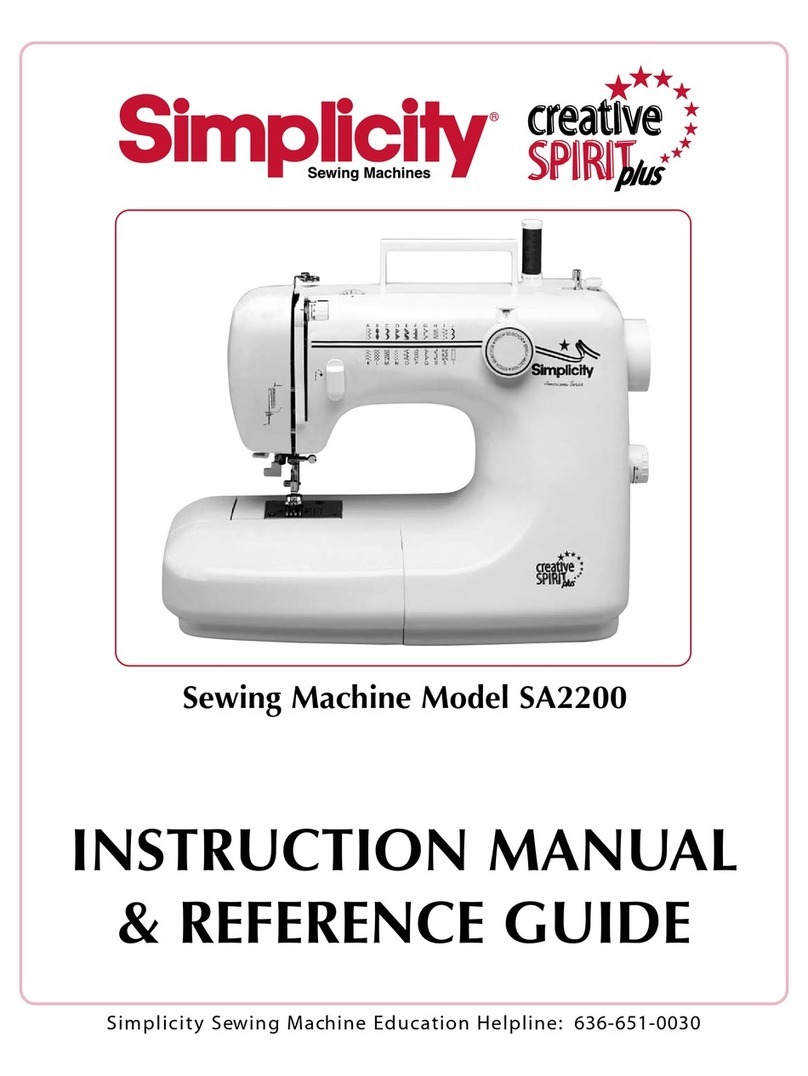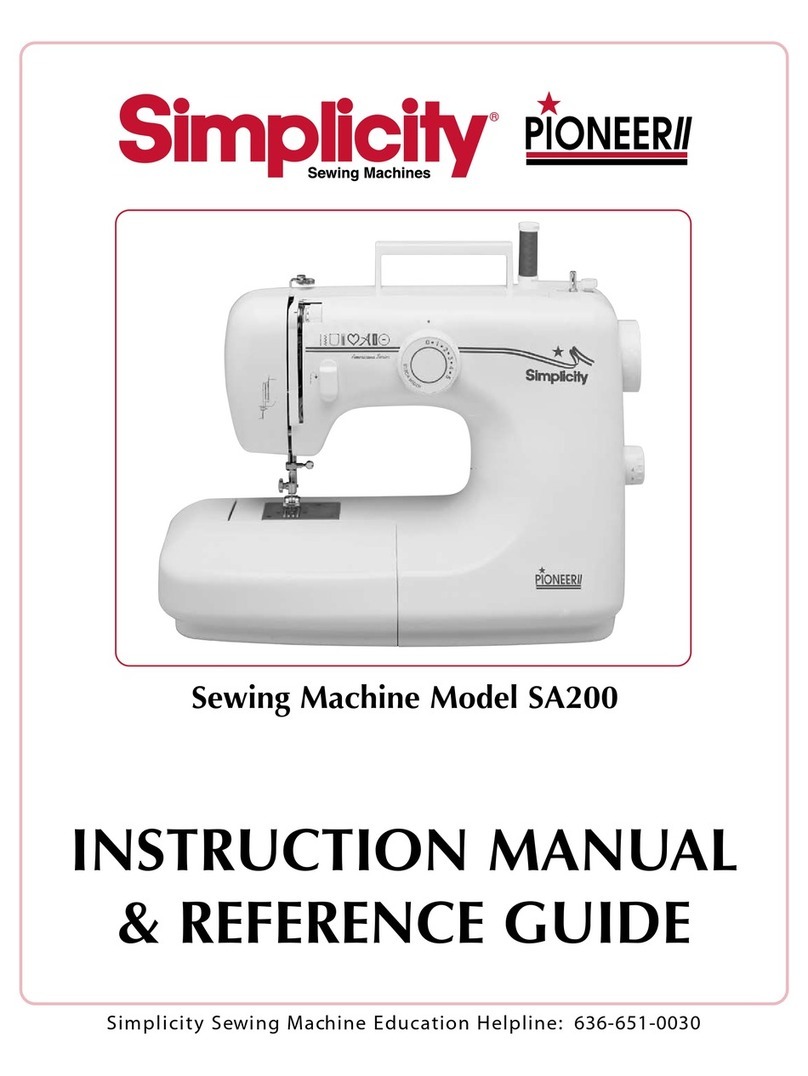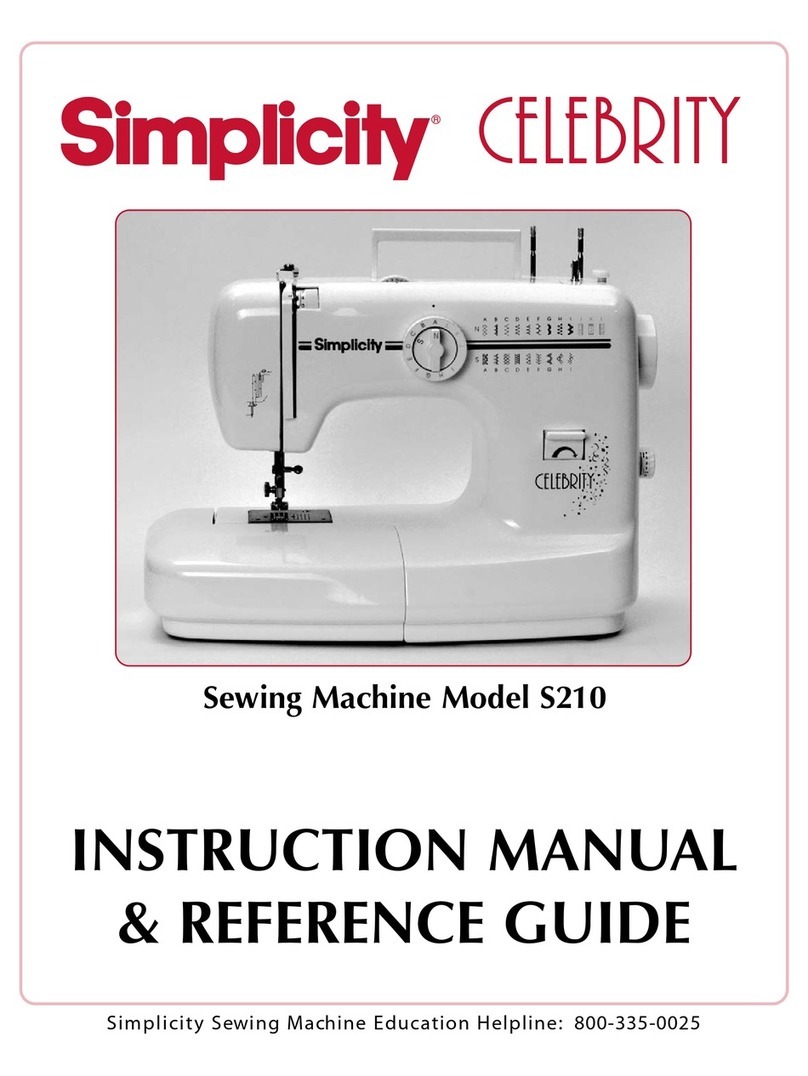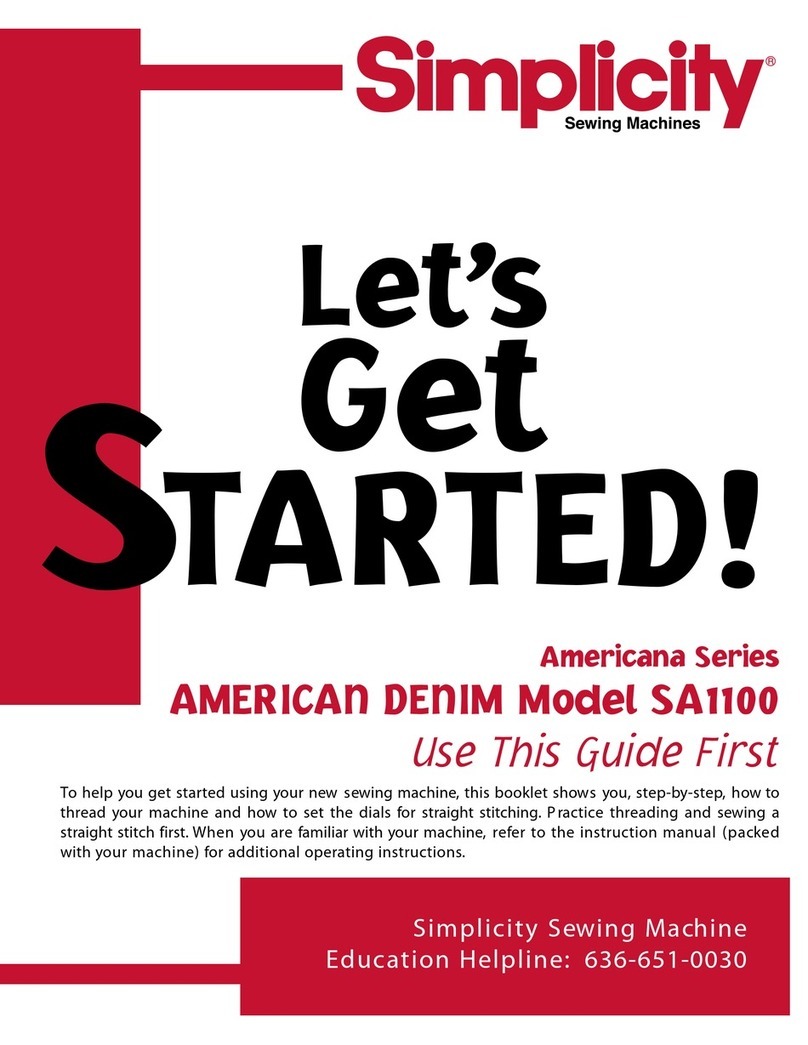
5
PRINCIPAL PARTS............................................................4-5
ACCESSORIES .....................................................................6
PREPARATION FOR SEWING .............................................7
ACCESSORY STORAGE .......................................................7
CHANGING PRESSER FEET.................................................7
Snap-on feet.................................................................7
Screw-on feet...............................................................7
FREE-ARM SEWING ............................................................8
PRESSER FOOT PRESSURE REGULATOR ............................8
DROP FEED ........................................................................8
LEVELING BAR....................................................................8
STITCH SELECTION ............................................................9
Pattern selector dial......................................................9
Stitch width dial...........................................................9
Stitch length dial ..........................................................9
Needle plate seam guides ............................................9
Reverse sewing lever....................................................9
STITCH SELECTION TABLE ...............................................10
TENSION ADJUSTMENTS .................................................10
Upper thread tension dial ..........................................10
Lower thread tension .................................................10
WINDING THE BOBBIN ...................................................11
LOWER THREADING ........................................................12
Removing the bobbin.................................................12
Inserting new bobbin .................................................12
Placing bobbin case in shuttle ...................................12
UPPER THREADING..........................................................13
Raising the bobbin thread ..........................................13
SEWING TIPS ....................................................................14
BEGINNING TO SEW........................................................14
NEEDLE, THREAD & FABRIC GUIDE ................................15
STITCH “A” STRAIGHT STITCH ........................................16
Seaming.....................................................................16
Basting.......................................................................16
Topstitching and edgestitching ...................................16
Gathering...................................................................17
Zipper insertion .........................................................17
Piping insertion..........................................................17
STITCH “A” ZIGZAG .........................................................18
Overedging ................................................................18
Bartacking..................................................................18
Satin stitch for appliqué .............................................18
Attaching buttons.......................................................19
Seaming knits.............................................................19
STITCH “B” BLINDHEM....................................................20
Blindhemming ...........................................................20
STITCH “C” THREE-STEP ZIGZAG ....................................20
Overcasting................................................................20
Mending ....................................................................20
Attaching flat elastic...................................................21
STITCH “D” SHELL STITCH ..............................................21
Seaming nylon tricot ..................................................21
Decorative picot hem.................................................21
STITCH “E” STRETCH STRAIGHT STITCH ........................22
Seaming bias curves...................................................22
Triple topstitching ......................................................22
Seaming double knits.................................................22
STITCH “E” RICK RACK.....................................................23
Overcasting heavy fabrics ..........................................23
Decorative rick rack...................................................23
STITCH “F” STRETCH OVERCAST.....................................23
Encasing elastic and ribbon .......................................23
Decorative flat fell seams ...........................................23
STITCH “G” HONEYCOMB ..............................................24
Decorative ribbon attaching.......................................24
Mock smocking..........................................................24
STITCH “H” SLANT OVERCAST........................................24
Attaching rib knit trim................................................24
BUTTONHOLE STITCH.....................................................25
FREE-MOTION MONOGRAMMING.................................26
FREE-MOTION QUILTING ................................................26
DARNING .........................................................................26
SEAMING SHEER FABRICS................................................27
PERFECT PATCHWORK PIECING......................................27
SEWING SPECIALTY SYNTHETIC FABRICS .......................27
SEWING WITH TWO THREADS........................................27
SEWING OVER DENSE SEAMS .........................................27
NEEDLES ...........................................................................28
CLEANING FEED TEETH AND SHUTTLE AREA.................28
CHANGING THE LIGHT BULB.........................................28
OILING .............................................................................28
TROUBLESHOOTING .................................................29-30
TABLE OF CONTENTS
KNOW YOUR SIMPLICITY SEWING MACHINE
SIMPLICITY SEWING MACHINE SET-UP
CUSTOM STITCH SELECTION
THREADING YOUR MACHINE
SEWING
BUILT-IN STITCHES
FREE-MOTION SEWING
SPECIALTY SEWING TECHNIQUES
CARE AND MAINTENANCE
